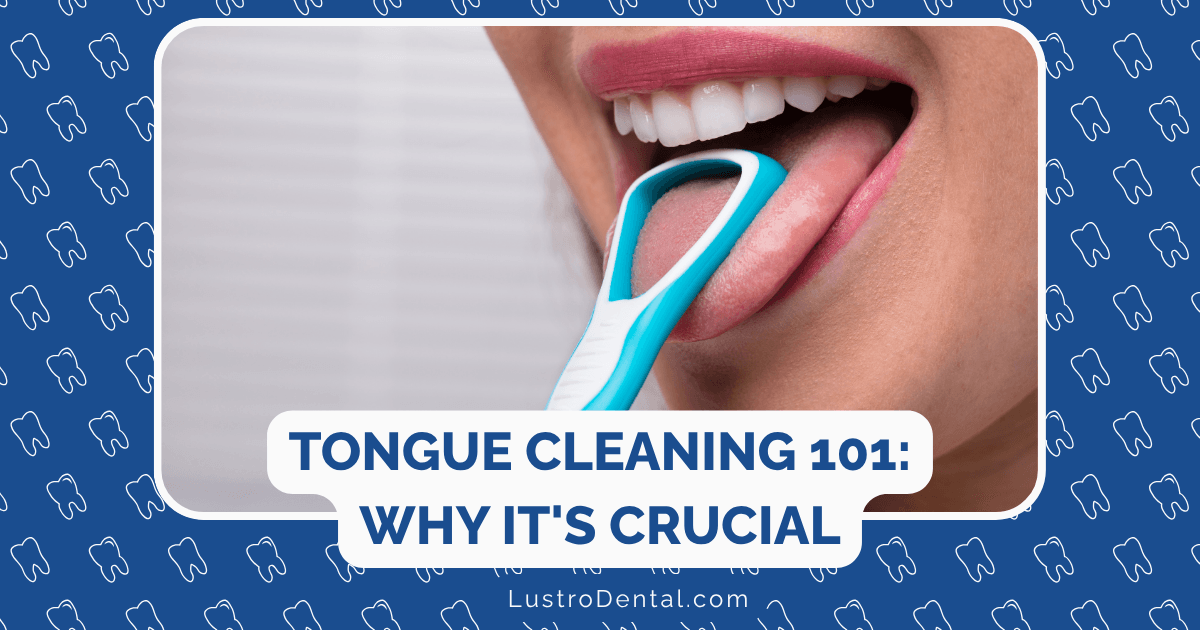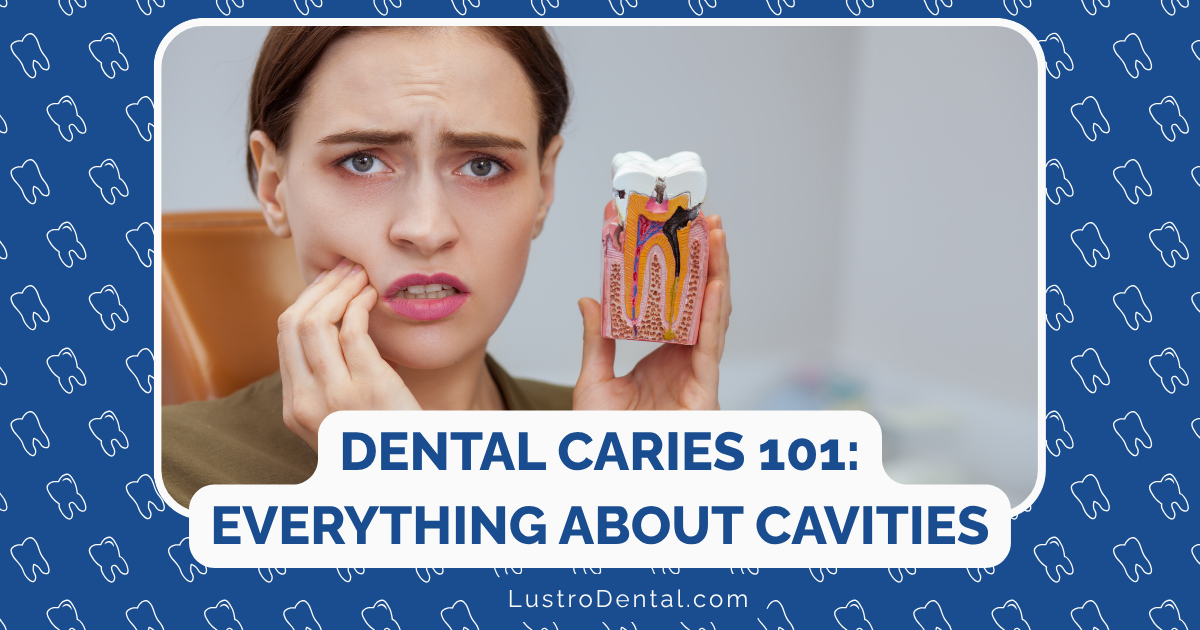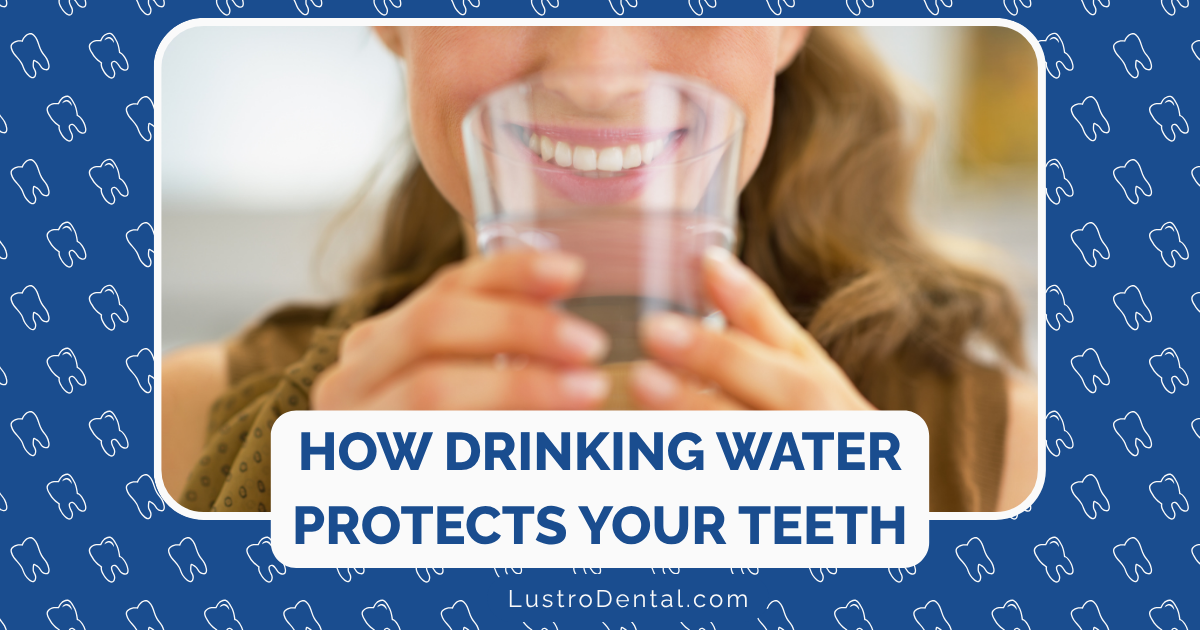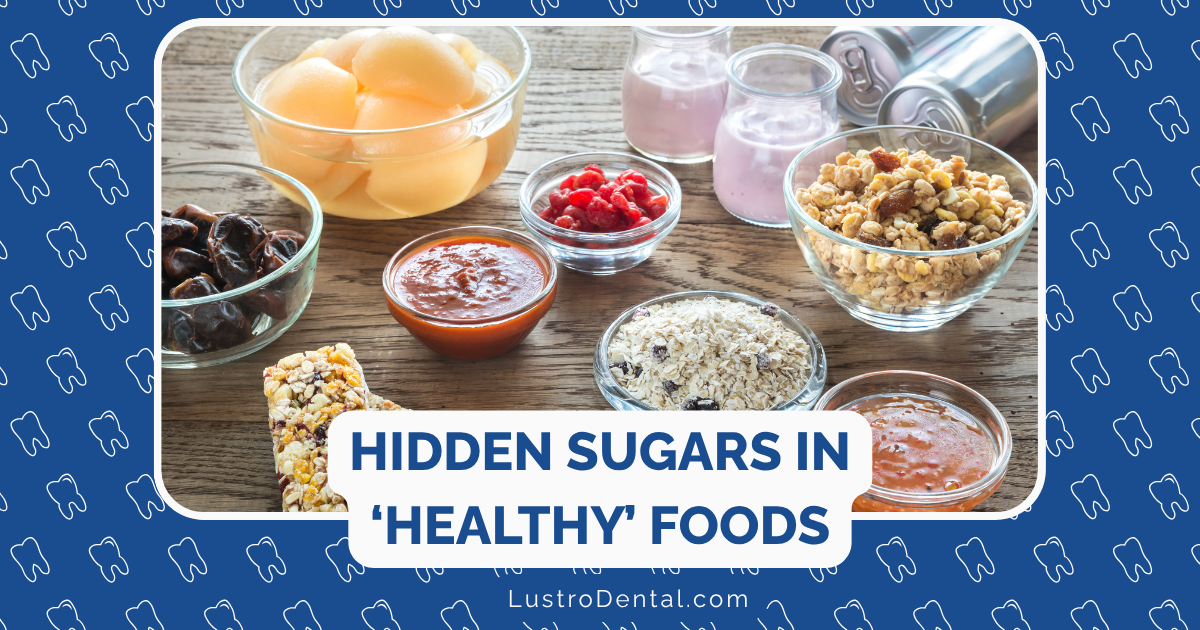Tongue Cleaning 101: The Forgotten Step in Your Oral Hygiene Routine

When it comes to oral hygiene, most of us have the basics down: brush twice a day, floss daily, and visit the dentist regularly. But there’s a crucial step that many people overlook—cleaning your tongue. Despite being one of the largest surfaces in your mouth and a major breeding ground for bacteria, tongue cleaning remains the forgotten step in most oral hygiene routines.
In this comprehensive guide, we’ll explore why tongue cleaning deserves a permanent spot in your daily dental care regimen, the science behind its benefits, and the best techniques to keep your tongue—and your whole mouth—healthier.
The Anatomy of Your Tongue: A Bacterial Playground
To understand why tongue cleaning matters, let’s first look at what makes your tongue such a hospitable environment for bacteria.
Your tongue isn’t a smooth surface—it’s covered with tiny bumps called papillae that create countless nooks and crannies. These papillae house your taste buds and help you enjoy food, but they also create the perfect environment for trapping:
- Food particles
- Dead cells
- Bacteria
- Fungi
- Volatile sulfur compounds
Dr. Sarah Chen, a periodontist at Columbia University, explains: “The tongue has a unique surface texture that’s unlike any other part of your body. Those papillae are similar to the pile on a carpet—they can trap and hold debris that a simple rinse won’t dislodge.”
This buildup forms what dentists call “tongue coating” or “biofilm”—a layer that can be white, yellow, or even brownish depending on factors like diet, oral hygiene, and health conditions.
“When I show patients magnified images of what’s living on their tongues, they’re usually shocked,” notes Dr. Michael Rodriguez, DDS. “The tongue harbors hundreds of bacterial species, some beneficial and others potentially harmful to oral health.”
The Scientific Case for Tongue Cleaning
Tongue cleaning isn’t just about aesthetics—it’s backed by scientific research showing significant health benefits.
1. Reducing Bad Breath (Halitosis)
Bad breath is perhaps the most obvious reason people start cleaning their tongues. According to research published in the Journal of Periodontology, the tongue is responsible for approximately 85% of all cases of halitosis (bad breath), with the back of the tongue being the primary culprit.
A landmark study published in 2004 compared the effectiveness of tongue scrapers versus toothbrushes for reducing volatile sulfur compounds (VSCs)—the substances responsible for bad breath. The results were striking:
- Tongue scrapers reduced VSCs by 75%
- Toothbrushes reduced VSCs by only 45%
“The back third of the tongue is particularly problematic,” explains dental hygienist Jennifer Marsh. “It’s harder to reach, rarely comes into contact with food or beverages that might help clean it naturally, and has deeper fissures where anaerobic bacteria thrive and produce those smelly sulfur compounds.”
2. Removing Harmful Bacteria
Your mouth is home to over 700 species of bacteria. While many are beneficial or harmless, others contribute to dental problems.
Research published in the International Journal of Dental Hygiene found that regular tongue cleaning significantly reduced the levels of Streptococcus mutans and Lactobacilli—bacteria strongly associated with tooth decay and gum disease.
A 2020 clinical study demonstrated that mechanical tongue cleaning reduced overall bacterial load by up to 61% when performed correctly, helping to maintain a healthier balance of oral microbiota.
3. Enhancing Taste Perception
Have you ever noticed that food seems to taste better after a dental cleaning? There’s a scientific reason for that.
A study in the Journal of Clinical Periodontology found that removing tongue coating significantly improved taste perception, particularly for salty, sweet, and bitter flavors. Participants reported an average 21% improvement in taste sensitivity after just two weeks of regular tongue cleaning.
“The coating on your tongue can physically block taste buds from properly interacting with food,” notes Dr. Lisa Warren, a prosthodontist. “Removing this barrier allows for more direct contact between taste molecules and receptors, enhancing your culinary experience.”
4. Supporting Overall Oral Health
The bacteria on your tongue don’t stay there—they can recolonize teeth and gums shortly after brushing.
“Think of your tongue as a reservoir for bacteria,” explains Dr. Rodriguez. “You can brush and floss perfectly, but if you leave your tongue uncleaned, you’re allowing millions of bacteria to redistribute throughout your mouth within hours.”
Research from the American Academy of Periodontology suggests that tongue cleaning should be part of a comprehensive approach to preventing gum disease, as it reduces the overall bacterial load in the mouth.
5. Potential Systemic Health Connections
Emerging research is exploring connections between oral bacteria and systemic health conditions. While more studies are needed, preliminary evidence suggests that reducing harmful oral bacteria through comprehensive hygiene practices (including tongue cleaning) may have implications for:
- Respiratory health
- Cardiovascular disease risk
- Diabetes management
- Digestive function
A review in the Journal of Oral Microbiology highlighted how bacteria from the mouth can be aspirated into the lungs or enter the bloodstream, potentially affecting other body systems.
Tongue Cleaning Tools: What Works Best?
When it comes to cleaning your tongue, you have several options. Each has its advantages, so let’s explore the most common tools:
Tongue Scrapers
What they are: Tongue scrapers are specialized tools designed specifically for cleaning the tongue. They typically come in a U-shape or T-shape and can be made of plastic, copper, stainless steel, or silicone.
Effectiveness: Research consistently shows tongue scrapers are the most effective tool for removing tongue coating. The 2004 study mentioned earlier found scrapers removed 30% more volatile sulfur compounds than toothbrushes.
Pros:
- Designed specifically for tongue anatomy
- More effective at removing debris and bacteria
- Quick and easy to use
- Metal versions (copper and stainless steel) have natural antimicrobial properties
- Gentle on tongue tissue when used correctly
Cons:
- Requires purchasing a separate tool
- Some people find them uncomfortable at first
- Metal versions can be cold initially
“Tongue scrapers are the gold standard for tongue cleaning,” says dental hygienist Marsh. “Their design allows them to conform to the tongue’s surface and remove debris without pushing it deeper into the papillae, which can happen with a toothbrush.”
Toothbrushes
What they are: Your regular toothbrush can be used to clean your tongue, though it’s not designed specifically for this purpose.
Effectiveness: While not as effective as scrapers, toothbrushes still remove approximately 45% of volatile sulfur compounds according to research.
Pros:
- Convenient—no additional tool needed
- Readily available
- Soft bristles can be gentle on sensitive tongues
- Some toothbrushes now include tongue cleaners on the back
Cons:
- Not designed for tongue’s unique surface
- Less effective at removing deep debris
- May trigger gag reflex more easily than scrapers
- Can push bacteria deeper into tongue crevices
“If a toothbrush is all you have, it’s certainly better than nothing,” notes Dr. Warren. “Just be gentle and use a separate toothbrush from the one you use on your teeth if possible, as the bristles will wear differently when used on the tongue.”
Tongue Brushes
What they are: Specialized brushes designed specifically for tongue cleaning, often with shorter, wider bristle patterns than toothbrushes.
Effectiveness: More effective than regular toothbrushes but generally less effective than scrapers according to comparative studies.
Pros:
- Designed specifically for tongue cleaning
- Often include features like rubber bristles or multiple cleaning surfaces
- May be more comfortable for those who dislike the feeling of scrapers
Cons:
- Less effective than scrapers at removing debris
- Can still push bacteria deeper into papillae
- Requires replacement like toothbrushes
“Tongue brushes represent a middle ground,” explains Dr. Chen. “They’re more effective than regular toothbrushes for tongue cleaning but don’t quite match the efficiency of a well-designed scraper.”
The Proper Technique: How to Clean Your Tongue Effectively
Having the right tool is only half the battle—proper technique is equally important for effective tongue cleaning.
Step-by-Step Guide for Tongue Scraping
- Timing: Ideally, clean your tongue first thing in the morning before eating or drinking, when bacterial buildup is highest after a night of sleep.
- Stick out your tongue: Extend your tongue as far as comfortable. This exposes more surface area and helps reduce the gag reflex.
- Position the scraper: Place the scraper at the back of your tongue, as far back as comfortable without gagging.
- Apply gentle pressure: Press down lightly—excessive pressure can damage taste buds and cause soreness.
- Pull forward: In one smooth motion, pull the scraper from back to front. Rinse the scraper after each pass.
- Repeat: Make 3-5 passes, working from the center to the sides to cover the entire tongue surface.
- Rinse thoroughly: Rinse both your mouth and the scraper with water after cleaning.
- Clean your tool: Wash your tongue scraper with soap and water after each use. Replace plastic scrapers every 3-4 months; metal scrapers can last years with proper care.
“The key is consistency and gentleness,” advises dental hygienist Marsh. “You’re aiming to remove the surface buildup, not scrub the tongue itself. With regular cleaning, you’ll notice less coating over time as you prevent buildup rather than removing accumulated debris.”
Using a Toothbrush for Tongue Cleaning
If using a toothbrush instead of a scraper:
- Apply a small amount of toothpaste if desired (optional).
- Stick out your tongue and place the toothbrush at the back.
- Use gentle forward strokes with light pressure.
- Brush from back to front, then side to side.
- Rinse thoroughly afterward.
“When using a toothbrush, the bristles should barely bend,” notes Dr. Rodriguez. “Many people brush their tongues too aggressively, which can cause irritation without improving cleaning effectiveness.”
Common Challenges and How to Overcome Them
Tongue cleaning can present some challenges, especially for beginners. Here’s how to address the most common issues:
Managing the Gag Reflex
Many people struggle with gagging when cleaning the back of their tongue. Try these strategies:
- Start gradually: Begin by cleaning the front and middle portions of your tongue, gradually working backward as your reflex desensitizes.
- Breathe through your nose: This helps suppress the gag reflex.
- Use less pressure: Often, a lighter touch is less likely to trigger gagging.
- Try different tools: Some people find scrapers less likely to trigger gagging than brushes.
- Stick out your tongue: Extending your tongue while cleaning reduces the gag reflex.
- Distraction techniques: Lifting one leg slightly or making a fist with your left hand can distract your brain from the gag reflex.
“The gag reflex typically improves with practice,” reassures Dr. Warren. “About 85% of my patients report that gagging diminishes significantly within two weeks of regular tongue cleaning.”
Dealing with Sensitivity
Some people experience tongue sensitivity or discomfort when they begin cleaning:
- Reduce pressure: Use a very light touch, especially when starting out.
- Check your tool: Ensure your scraper has no sharp edges or rough spots.
- Limit frequency: Start with once daily until sensitivity improves.
- Avoid alcohol-based products: Don’t use alcohol-based mouthwashes immediately after tongue cleaning.
- Stay hydrated: A dry mouth can increase sensitivity.
“If sensitivity persists beyond a few days of gentle cleaning, consult your dentist,” advises Dr. Chen. “Persistent discomfort could indicate an underlying condition that needs attention.”
Addressing Persistent Discoloration
If your tongue remains discolored despite regular cleaning:
- Be patient: Significant improvement may take several weeks of consistent cleaning.
- Check medications: Some medications can cause tongue discoloration.
- Evaluate habits: Tobacco, coffee, tea, and certain foods can stain the tongue.
- Consider professional cleaning: Your dental hygienist can provide a more thorough cleaning.
- Consult your dentist: Persistent discoloration could indicate conditions like oral thrush or geographic tongue that require treatment.
“Never ignore persistent white or red patches on your tongue that don’t improve with cleaning,” warns Dr. Rodriguez. “These could be signs of conditions requiring medical attention.”
Integrating Tongue Cleaning into Your Daily Routine
For tongue cleaning to be effective, it needs to become a habitual part of your oral hygiene routine. Here are strategies to help make it stick:
Morning vs. Evening Cleaning
While either time works, morning cleaning offers some advantages:
- Bacteria accumulate overnight while you sleep
- Morning cleaning helps freshen breath for the day ahead
- Removing bacteria in the morning prevents them from feeding on foods throughout the day
“If you can only clean your tongue once daily, morning is ideal,” suggests dental hygienist Marsh. “But cleaning both morning and evening provides optimal results, especially for those prone to bad breath or heavy tongue coating.”
Creating a Consistent Habit
Try these approaches to establish a consistent tongue cleaning habit:
- Pair with existing habits: Place your tongue cleaner next to your toothbrush as a visual reminder.
- Start small: Commit to just 30 seconds of tongue cleaning daily.
- Use reminders: Set a phone alert until the habit becomes automatic.
- Track your progress: Note improvements in breath freshness, tongue appearance, and taste perception.
- Make it rewarding: Use a tongue cleaner you enjoy (comfortable, attractive design) and focus on the fresh feeling afterward.
“Habit formation typically takes about 21 days,” notes Dr. Warren. “If you can consistently clean your tongue for three weeks, you’re likely to maintain the habit long-term.”
Special Considerations for Different Groups
Tongue cleaning needs and approaches may vary based on individual circumstances:
For Children
- Start introducing gentle tongue cleaning around age 6-7
- Make it fun with child-friendly tools in bright colors
- Demonstrate the technique and help them initially
- Use positive reinforcement rather than focusing on “bad breath”
- Consider a small tongue brush rather than a scraper for young children
“Children actually tend to adapt to tongue cleaning more easily than adults,” observes Dr. Chen. “They’re less likely to have established the gag reflex issues that adults develop, and they respond well to making it a game.”
For Seniors
- Choose ergonomic tools with easy-grip handles for those with dexterity issues
- Consider electric tongue cleaners for those with limited hand mobility
- Be aware that medications may increase tongue coating and require more frequent cleaning
- Stay well-hydrated, as dry mouth is common in older adults and can worsen tongue coating
- Regular tongue cleaning is especially important for denture wearers
“For my senior patients, tongue cleaning can significantly improve quality of life,” says Dr. Rodriguez. “Many experience diminished taste sensation with age, and removing tongue coating can help food taste better, potentially improving nutrition.”
For People with Braces or Dental Appliances
- Clean your tongue before brushing your teeth to prevent debris from getting caught in orthodontic appliances
- Consider using a tongue brush rather than a scraper if you have fixed appliances
- Be extra diligent, as orthodontic appliances can create additional surfaces for bacteria to accumulate
- Rinse thoroughly after cleaning to remove loosened debris
“Patients with braces often experience more tongue coating due to changes in eating patterns and oral bacteria,” notes dental hygienist Marsh. “Regular tongue cleaning becomes even more important during orthodontic treatment.”
When to Seek Professional Help
While tongue cleaning is generally beneficial, certain situations warrant professional attention:
Warning Signs
Consult your dentist if you notice:
- Persistent white, red, or dark patches that don’t improve with cleaning
- Pain or burning sensations when eating, drinking, or cleaning your tongue
- Significant changes in tongue appearance (unusual bumps, cracks, or smoothness)
- Severe bad breath that doesn’t improve with proper oral hygiene
- Swelling of the tongue or difficulty moving it normally
“The tongue is a barometer for overall health,” explains Dr. Warren. “Changes in its appearance or function can sometimes indicate systemic conditions that require medical attention.”
Professional Cleaning Options
Your dental hygienist can provide professional tongue cleaning as part of your regular dental visit. Benefits include:
- More thorough cleaning with professional tools
- Expert technique to reach difficult areas
- Evaluation of tongue health by a trained professional
- Personalized recommendations for home care
“I often recommend a professional tongue cleaning at least once a year,” says Dr. Chen. “It provides a ‘reset’ and gives us an opportunity to demonstrate proper technique for home care.”
The Bottom Line: A Small Step with Big Benefits
Adding tongue cleaning to your daily oral hygiene routine requires minimal time and effort but offers significant rewards:
- Fresher breath throughout the day
- Reduced bacterial load in your mouth
- Enhanced taste perception
- Potential reduction in cavity and gum disease risk
- Contribution to overall oral and systemic health
- A cleaner-looking tongue and healthier mouth
“In my 25 years of practice, I’ve found tongue cleaning to be one of the most underrated yet impactful additions to oral hygiene,” concludes Dr. Rodriguez. “Patients who adopt this habit consistently report not only fresher breath but also greater satisfaction with their overall oral health.”
By understanding the science behind tongue cleaning and implementing the techniques outlined in this guide, you can transform this forgotten step into an essential component of your daily oral care routine—and enjoy a cleaner, healthier mouth as a result.







